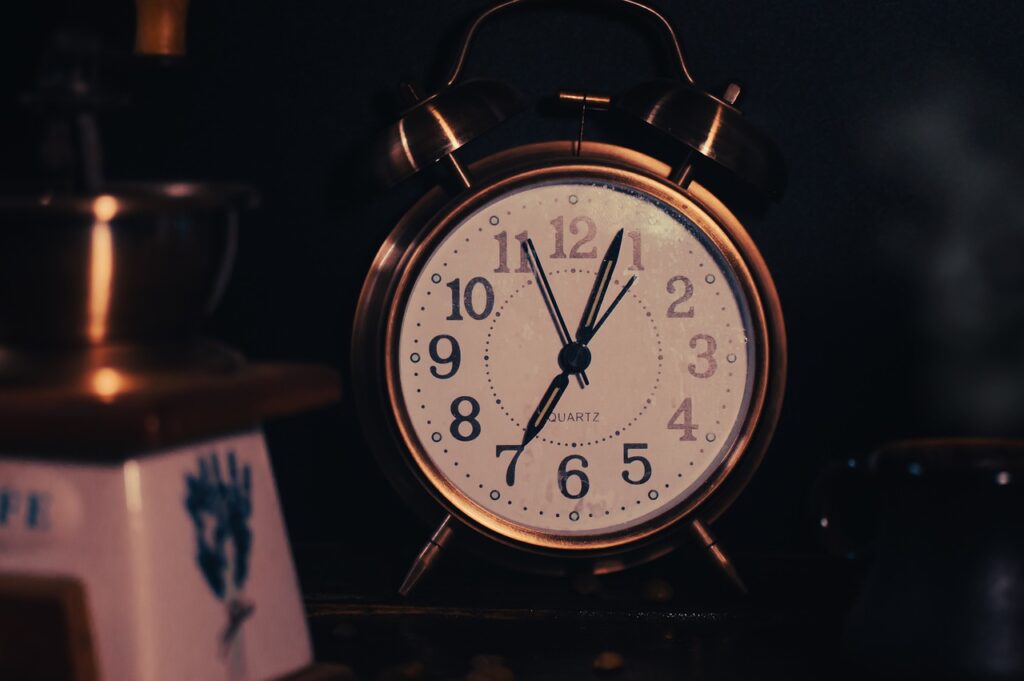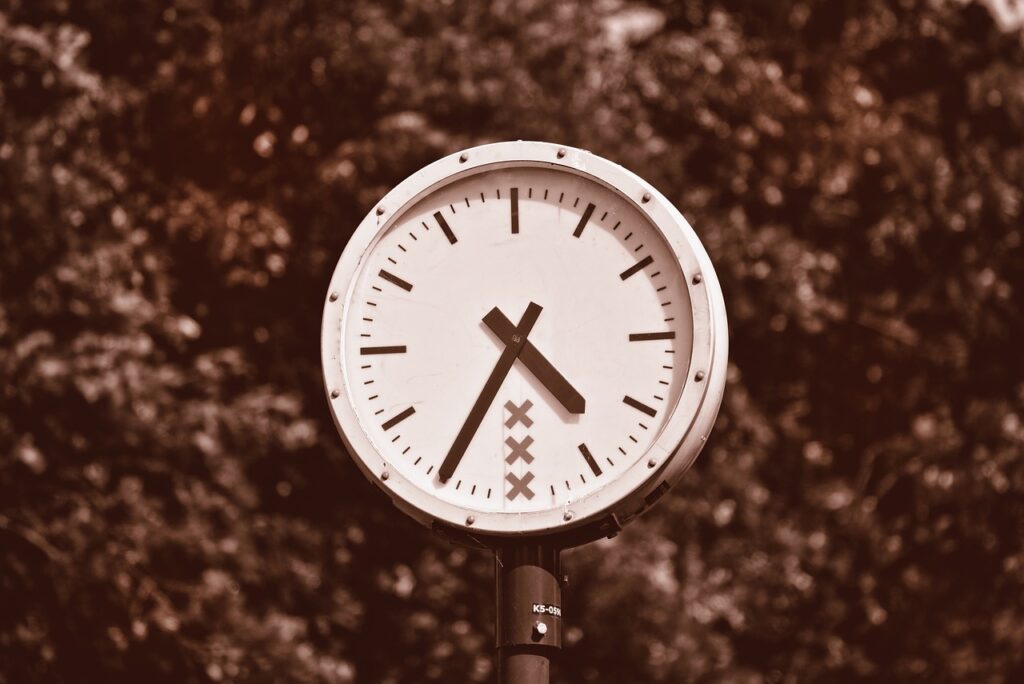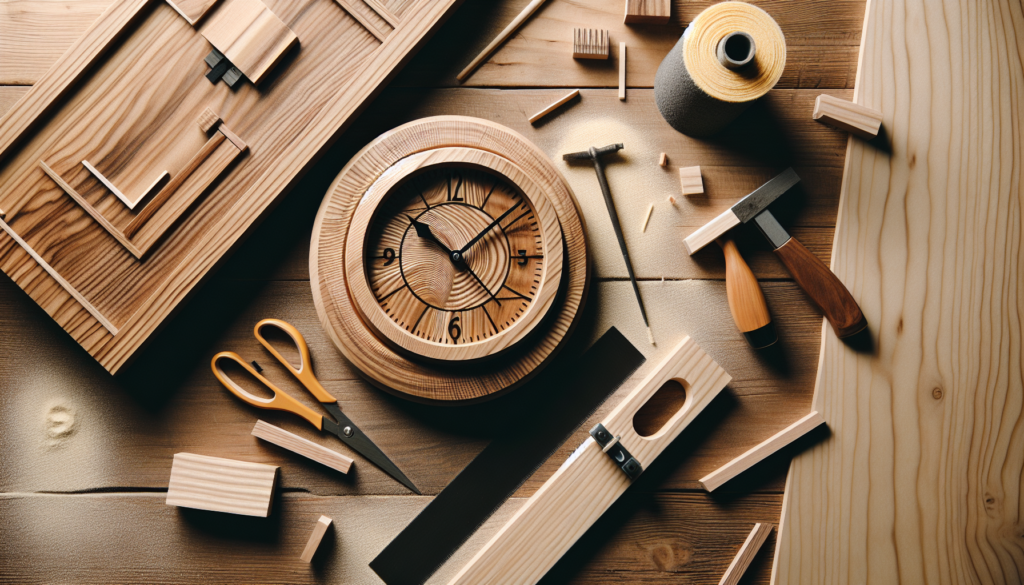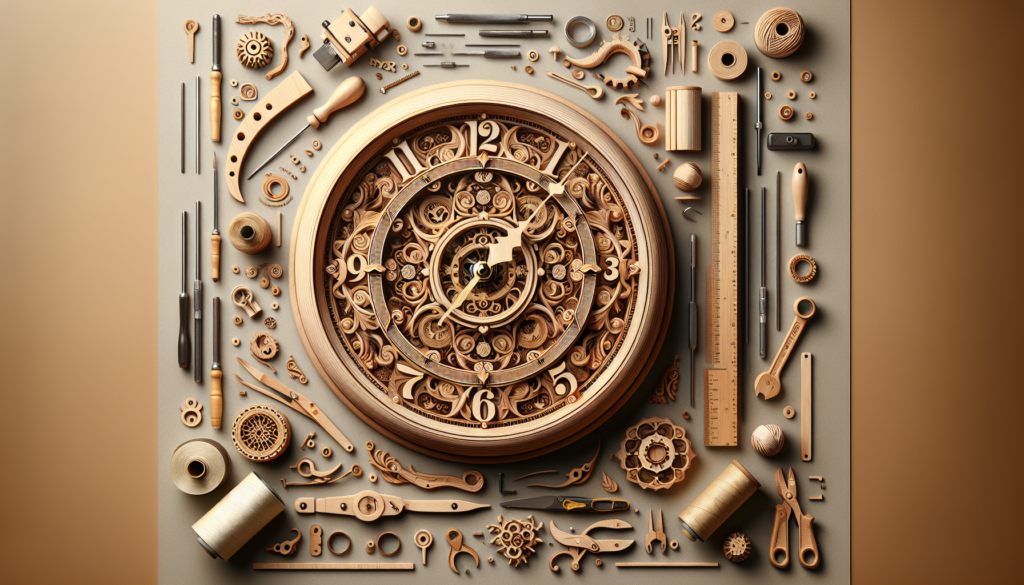Imagine transforming a humble block of wood into a functional piece of art that not only tells time but also adds a touch of rustic charm to your space. With DIY wooden clock projects, the possibilities are endless. From elegant mantel clocks to whimsical wall hangings, there is a wooden clock waiting to be created by your talented hands. So, dust off your tools, roll up your sleeves, and get ready to embark on a woodworking adventure that will leave you with a timeless masterpiece.
Materials Needed
To embark on your DIY wooden clock project, you will need a few essential materials. Here’s a list of what you’ll need to gather before you get started:
Wood
First and foremost, you’ll need the main material for your clock – wood. The type of wood you choose will depend on your personal preferences and the overall style you want to achieve. Some popular choices include oak, walnut, and birch.
Clock Mechanism
Next, you’ll need a clock mechanism to make your clock functional. This includes the clock hands and the mechanism that drives them. You can find clock mechanisms at craft stores or online.
Drill
A drill is necessary to create holes in the wood for the clock mechanism and any additional adornments you might want to add. Make sure you have a drill with various drill bit sizes to accommodate different parts.
Saw
A saw will come in handy for cutting the wood to the desired sizes and shapes. Depending on your project, you may need different types of saws, such as a jigsaw or a miter saw.
Sandpaper
To ensure a smooth and polished finish, you’ll need sandpaper. Different grits of sandpaper can be used to achieve different levels of smoothness, so it’s helpful to have a few varieties on hand.
Glue
Depending on your design, you may need glue to attach certain pieces together. Make sure you choose a strong adhesive that is suitable for wood.
Clamps
Clamps are useful for holding pieces of wood together while the glue dries. They help ensure a secure bond and can be invaluable during the assembly process.
Paint or Stain
If you want to add a splash of color or enhance the natural beauty of the wood, you’ll need paint or stain. Consider the aesthetic you want to achieve and choose a suitable product.
Paintbrush
A paintbrush will be needed to apply the paint or stain evenly onto the wood. Choose a brush suitable for the size of your project and the type of finish you’re using.
Ruler
Lastly, a ruler will be necessary for measuring and marking the wood accurately. Make sure you have a sturdy and precise ruler on hand.
Choosing the Right Wood
The type of wood you choose will greatly impact the final look and feel of your DIY wooden clock. Consider the following factors when choosing the right wood for your project:
Type of Wood
Different types of wood have distinct characteristics that can influence the overall aesthetics and durability of your clock. Oak, for example, is known for its strength and grain patterns, while walnut offers a rich and dark tone. Consider the unique qualities of each type of wood and pick one that suits your style and preferences.
Size and Shape
Consider the size and shape of your clock design before selecting the wood. You want to choose a piece of wood that can accommodate your desired clock size without compromising its structural integrity. Take into account the thickness of the wood as well, as this can affect the overall stability and durability of your clock.
Grain Pattern
The grain pattern refers to the unique arrangement of wood fibers. It can greatly impact the visual appeal of your wooden clock. Some people prefer a tight and uniform grain pattern, while others appreciate the natural beauty of more pronounced patterns. Consider the overall aesthetic you want to achieve and choose a wood with a grain pattern that aligns with your vision.
Sustainability
If eco-friendliness is important to you, opt for wood that has been sustainably sourced. Look for certifications such as the Forest Stewardship Council (FSC) to ensure that the wood comes from responsibly managed forests. By choosing sustainable wood, you can enjoy your DIY project while also helping to protect the environment.

Design and Planning
The design and planning phase is an exciting opportunity to unleash your creativity and personalize your DIY wooden clock. Consider the following aspects when designing your clock:
Clock Face Size
Think about the size of the clock face you want to have. This will dictate the dimensions of the wooden base and impact the overall proportions of your clock. Take into account where you plan to display your clock and ensure it fits seamlessly into the chosen space.
Clock Hands Style
Clock hands come in various styles, and your choice can greatly influence the overall aesthetic of your wooden clock. From sleek and modern to intricate and vintage, there are endless options to suit your taste. Consider the style of your clock and the type of wood you’re using to ensure the hands complement the overall design.
Numbering or Indexes
Decide whether you want to include numbers or indexes on your clock face. This can be done using stickers, stencils, or even hand-painting. Think about the overall look you want to achieve and how numbers or indexes can enhance the functionality and visual appeal of your clock.
Optional Decorations
Consider adding optional decorations to customize your wooden clock further. This could include wood carvings, engravings, or even inlay work. Let your creativity run wild and make your clock a true reflection of your personal style.
Preparing the Wood
Before diving into the assembly process, it’s crucial to prepare the wood properly. Follow these steps to ensure your wooden clock turns out beautifully:
Measuring and Marking
Using your ruler, carefully measure and mark the dimensions of the wood pieces you need for your clock. Double-check your measurements to avoid any errors that could affect the final product.
Cutting the Wood
Once you have your measurements and markings, it’s time to cut the wood. Use a saw appropriate for the cuts you need to make, whether straight or angled. Take your time and cut the wood pieces as accurately as possible to ensure a seamless assembly.
Sanding the Surfaces
After cutting the wood, use sandpaper to smooth the surfaces. Sand in the direction of the wood grain to avoid any scratches or damage. Start with a grit that removes roughness and gradually work your way up to a finer grit for a polished finish. Pay extra attention to any edges or corners that may require additional smoothing.

Assembling the Clock
Now that you have your wood pieces prepared, it’s time to assemble your wooden clock. Follow these steps to ensure a secure and functional assembly:
Drilling Holes for Clock Mechanism
Using a drill bit suitable for the clock mechanism you have, carefully drill holes in the appropriate places on the wood pieces. Follow the instructions provided with your clock mechanism for guidance on hole placement and size.
Inserting the Clock Mechanism
Once the holes are drilled, insert the clock mechanism into the designated hole. Ensure a snug fit, and secure it in place according to the manufacturer’s instructions.
Attaching Clock Hands
With the clock mechanism in place, attach the clock hands. Follow the instructions provided with your clock mechanism for guidance on attaching the hands securely. Take care not to bend or damage the hands during the installation process.
Adding Numbering or Indexes
If you have chosen to include numbers or indexes on your clock face, now is the time to add them. Depending on your design, this can be done using stickers, stencils, or even hand-painting. Take your time to ensure the numbers or indexes are applied neatly and centered correctly.
Finishing Touches
With the assembly complete, it’s time to add the finishing touches to your wooden clock. This includes adding color or protection to the wood surface to enhance its appearance and durability.
Painting or Staining
Consider whether you want to paint or stain your wooden clock. Painting allows you to explore a range of colors and finishes, while staining enhances the natural beauty of the wood. Choose a product that is suitable for your wood type and desired aesthetic.
Applying a Protective Finish
To ensure your wooden clock stands the test of time, apply a protective finish. This can be a clear varnish, lacquer, or wax, depending on your preference. The protective finish will help safeguard the wood from scratches, moisture, and other potential damage.
Cleaning and Polishing
Before enjoying your newly finished clock, make sure to clean and polish it. Wipe away any dust or debris and give the wood surface a gentle polish. This will ensure your clock looks its best and is ready to be displayed or gifted.

Mounting the Clock
Once your wooden clock is complete, it’s time to decide how you want to mount it. Consider the following options for displaying your masterpiece:
Wall Mounting
The most common way to display a clock is by wall mounting it. Use appropriate hardware to securely attach your clock to the wall. Take into account the weight of your clock and choose appropriate anchors or screws to ensure it stays securely in place.
Stand or Shelf Placement
If wall mounting isn’t an option or you simply prefer an alternative, consider using a stand or placing your clock on a shelf. There are various stands available that can hold your wooden clock upright and allow it to be showcased on any flat surface.
Troubleshooting and Tips
Even with careful planning and execution, sometimes issues may arise during the construction of your wooden clock. Here are a few troubleshooting tips to help you overcome common challenges:
Checking for Leveling
To ensure your clock hangs or stands straight, use a level to check for any tilting or imbalance. Adjust as necessary to achieve a level and visually pleasing result.
Ensuring Proper Hour Hand Positioning
It’s crucial to position the hour hand correctly to ensure accurate timekeeping. Double-check that the hour hand aligns with the appropriate index or number when it points to the hour.
Replacing Clock Hands
If you’re unsatisfied with the appearance or functionality of your clock hands, don’t be afraid to replace them. There are various styles and sizes available, allowing you to customize your clock further.
Repairing or Replacing Mechanism
If your clock mechanism stops working or malfunctions, consult the manufacturer’s instructions for troubleshooting tips. If necessary, you can replace the mechanism entirely to ensure your clock keeps ticking.

Safety Precautions
When working with woodworking tools and materials, it’s important to prioritize safety. Remember the following safety precautions throughout your DIY wooden clock project:
Wearing Protective Gear
Always wear appropriate protective gear, such as safety goggles and gloves, when working with tools or handling wood. This will help prevent injuries and keep you safe.
Using Tools Safely
Familiarize yourself with the proper use of each tool and handle them with care. Follow the manufacturer’s instructions for safe operation and never rush or take shortcuts.
Securing Workpieces
When cutting or drilling wood, make sure to secure the workpiece firmly. This will prevent accidents and ensure clean and accurate cuts or holes.
Conclusion
Congratulations! You’ve successfully completed your DIY wooden clock project. Now it’s time to enjoy your creation and proudly display it in your home or gift it to someone special. Remember to share your masterpiece with others who may be inspired by your creativity and craftsmanship. Happy clock making!


